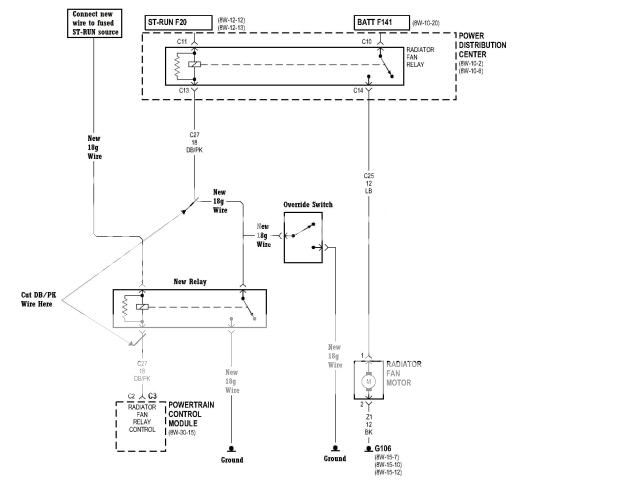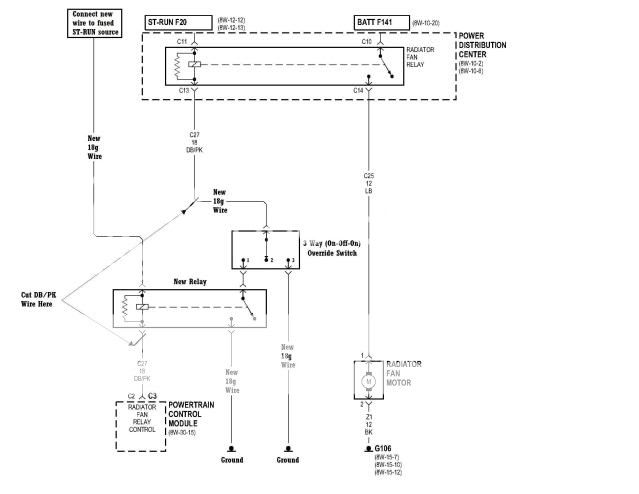anthrax323
NAXJA Forum User
- Location
- San Antonio, TX
Hey guys,
I know several people have installed an ELK-960 fan timer to solve 2000 and 2001 heat soak woes:
http://www.at-fairfax.com/P1786-ELK-960.htm
Hell, it actually looks like fellow 'er muddeprived drew a pretty good schematic regarding how to wire it in:
'er muddeprived drew a pretty good schematic regarding how to wire it in:
http://i37.photobucket.com/albums/e73/muddeprived/cherokee/AuxFanDelayTimerWiring.jpg?1286206881
My question is this: why can't the timer be used as a secondary trigger for the factory relay? I'd like to avoid adding another relay and high-amperage circuit to the vehicle's electric system and simply piggy-back on the stock/existing e-fan relay. Am I overlooking anything in this idea?
I know several people have installed an ELK-960 fan timer to solve 2000 and 2001 heat soak woes:
http://www.at-fairfax.com/P1786-ELK-960.htm
Hell, it actually looks like fellow
 'er muddeprived drew a pretty good schematic regarding how to wire it in:
'er muddeprived drew a pretty good schematic regarding how to wire it in:http://i37.photobucket.com/albums/e73/muddeprived/cherokee/AuxFanDelayTimerWiring.jpg?1286206881
My question is this: why can't the timer be used as a secondary trigger for the factory relay? I'd like to avoid adding another relay and high-amperage circuit to the vehicle's electric system and simply piggy-back on the stock/existing e-fan relay. Am I overlooking anything in this idea?



